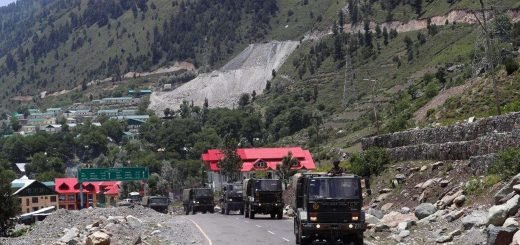Book Review: Nehru, Tibet and China

India’s relations with China are an essential component in both the country’s foreign policy calculations as well as for the contemporary international affairs. Unfortunately, a significant part of the Sino-Indian relations is still uncovered and misunderstood. Therefore, there is a need to write the history of India-China relations for the future generations of scholars and students who had not experienced the important events and episodes in their lifetime. A.S. Bhasin has taken that effort to narrate a few aspects of India-China relations with a focus on the role of Tibet as an influential factor. In the preface, the author has explained, “My instinct as a student of history compelled me to undertake the present study and put forward the factual history of those turbulent days before the people of India, as emerging from those documents.” (p-xvii) By ‘those documents’, the author implies the classified documents which were hidden from the public eyes until recently.
Divided into a total 12 chapters this is a detailed history of India-China relations, especially the India-China border war of 1962. To narrate the historical perspective of the modern-day relationship between India, China and Tibet, the author has illustrated the role of the British in the subcontinent. He mentioned that despite several attempts following the Simla Convention, China was not ready to accept Tibet as an independent state. This led to future ‘friction’ between India and China. (p-15) In the next chapter, the author explained that Tibet failed to secure de facto independence from China between 1919 and 1949. The author also opined that Tibet could have sought membership in the League of Nations or at the United Nations to escape its fate at the hands of the Chinese. What was India’s stand to these early developments relating to the fate of Tibet? The author says, India had organised a conference in favour Indonesian independence, but did not undertake any such action for Tibet’s autonomy. The question that one puts in, would any such conference have been helpful? Moving on, as China became increasingly aggressive towards Tibet, the Indian side somehow miscalculated the Chinese adventures. At this point of time, the author reminds the readers that the Indian mission in Beijing ‘assured’ Delhi of the Chinese desire to maintain friendly relations with New Delhi. (p-83). However, the situation quickly changed in November 1950 as China attacked the Tibetan border town Chambo and arrested its governor. The Tibetan side then requested the Government of India for asylum to be granted to Dalai Lama. The end of this Chinese aggression was the 17-Point Agreement which ‘prepared the ground for the final ousting of India from Lhasa’. (p-132)

In one of the chapters on India-China diplomacy, the author has detailed about the role of the Indian diplomats and policy makers and their influences on Prime Minister Jawaharlal Nehru. For instance, T.N. Kaul who had served in Beijing and worked in the historical division of the Ministry of External Affairs of India, influenced PM Nehru to work on the borders and develop communications in those areas. As the author returns to the discussion on Tibet, he quoted a MEA clarification which explained that India would not support a separate government of Tibet. (p-184) For many India-China watchers and historians, these clarifications and citations could be a game-changer in perspectives and narratives. This explains the beauty of this book for the academicians.
Speaking of a few twists in India-China relations, the author also narrates the story of China building a road near Aksai Chin which did not attract any traction till it was almost complete. Later Prime Minister Nehru was criticised for not paying attention to these developments which led to diplomatic failure on part of India. Towards the end of the book, the author has illustrated the India-China Summit in April 1960 and developments that led to the border war in 1962. The tragic history of the 1962 border war would make the Indians ‘prisoners of our past’- the author reflects. (p-325)

Mentioning about the benefits of reading this book is important for the readers. This book offers a detail history of India-China relations and also discusses the Tibet factor. Therefore, any contemporary history and political-history readers would find this book informative and fascinating. The book is rich in resources- mostly primary resources. The author has taken efforts in collecting the government documents (speeches, notes, clarifications, statements, meeting summaries etc.) and analysing those papers in a comprehensive way. Therefore, from an archival point of view, this book offers a good amount of significance. A reader or a student who is not aware of the facts and myths about India-China border war of 1962, would be enlightened and informed by the pages of this book and hence, this is a must-read for them.



















